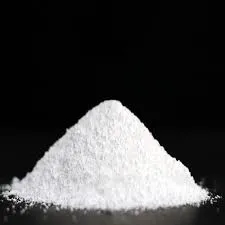The Role of Active Pharmaceutical Ingredient in Paracetamol
Paracetamol, also known as acetaminophen, is one of the most widely used medications globally. It serves as a staple in both prescription and over-the-counter formulations for the relief of pain and the reduction of fever. The efficacy of paracetamol can be attributed to its active pharmaceutical ingredient (API), which plays a paramount role in its therapeutic properties. Understanding the significance and functionality of the API in paracetamol provides deeper insights into its usage, risks, and manufacturing processes.
Understanding Active Pharmaceutical Ingredients
An active pharmaceutical ingredient is the component of a medication that produces its intended physiological effect. In the case of paracetamol, the API is acetaminophen itself. The chemical structure of acetaminophen allows it to interact with various pathways in the body, primarily targeting the central nervous system to alleviate pain and reduce fever effectively.
Mechanism of Action
Acetaminophen’s mechanism of action is not entirely understood, but it is believed to involve the inhibition of cyclooxygenase (COX) enzymes, which are crucial in the synthesis of prostaglandins, the chemicals that mediate pain, inflammation, and fever. Unlike non-steroidal anti-inflammatory drugs (NSAIDs), paracetamol exhibits minimal anti-inflammatory effects, making it a preferred option for individuals who cannot tolerate NSAIDs due to gastrointestinal side effects or other complications.
The action of acetaminophen is primarily mediated in the brain, where it is thought to be more effective at reducing the perception of pain and influencing the body’s temperature-regulating center in the hypothalamus. This targeted action explains why paracetamol is often favored for treating headaches, muscle aches, and fever associated with colds and flu.
Dosage and Formulation
active pharmaceutical ingredient in paracetamol

The API concentration in paracetamol formulations is meticulously regulated to ensure both efficacy and safety. Over-the-counter paracetamol typically comes in various dosages—ranging from 325 mg to 500 mg per tablet for adults, with specific formulations available for children. It is crucial to adhere to recommended dosages to prevent toxicity, particularly since excessive intake of acetaminophen can lead to severe liver damage.
The formulations of paracetamol also include excipients that aid in the stability, absorption, and dosing of the API. These excipients help determine the release profile of the medication, such as immediate-release versus extended-release formulations, allowing for flexibility in treatment regimens based on patient needs.
Safety and Risks
While paracetamol is generally considered safe when used as directed, the risks associated with the misuse of the API are significant. Acetaminophen toxicity is a leading cause of liver failure, and many fatal overdoses occur unknowingly through the consumption of multiple products containing the ingredient. For this reason, public awareness and education regarding the proper use of paracetamol are critical.
Patients should also be aware of the interaction between paracetamol and certain medications or substances, such as alcohol, which can enhance the risk of liver toxicity. Healthcare professionals play a vital role in advising patients about potential risks, especially in populations with preexisting liver conditions.
Conclusion
In summary, the active pharmaceutical ingredient in paracetamol, acetaminophen, is central to its effectiveness as a pain reliever and fever reducer. Its mechanism of action, along with careful consideration of dosage and formulation, underscores the importance of the API in ensuring therapeutic benefits while minimizing risks. As with any medication, awareness of proper usage, safety, and potential side effects is essential for maximally benefit from paracetamol and ensuring a positive therapeutic outcome. As research continues to unravel the complexities of acetaminophen's action and its role in pain management, it remains a cornerstone in the arsenal of healthcare providers worldwide.

